Growing up, I never liked the taste of the sauerkraut my mom would buy from the store. It just had a weird taste. Are you with me? Fast forward to an adult in my thirties and I tried homemade sauerkraut. What a difference in taste. I’ve been making it every since. I’m so excited to show you how to make raw sauerkraut.
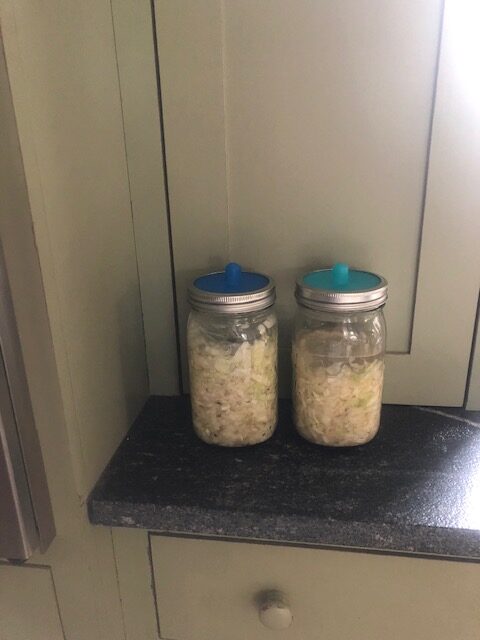
Health Benefits to Sauerkraut
I never realized until I had that first bite of homemade raw sauerkraut that there were health benefits to eating it. Because it hasn’t gone through a heat process, the beneficial bacteria has stayed intact. I’m talking about eating raw sauerkraut. Let’s see some of the health benefits.
- There are beneficial bacteria in raw sauerkraut making it an excellent choice for probiotics. It is a wonderful food in helping with repairing a leaky gut.
- Better nutrition absorption
- Prevention and reduction in food allergies
- Protects against H. Pylori
- May lower cholesterol
Fermented sauerkraut is a great alternative to buying probiotics from the store. Have you tried my Fermented Garlic Dill Pickles?
Source: Dr. Axe has an extensive list of health benefits.
What is Raw Sauerkraut?
Raw Sauerkraut is basically the fermentation of cabbage and salt. Fermenting foods has been around for hundreds of years. It’s amazing how two simple ingredients can give you such a powerful list of health benefits. Lacto-fermentation that uses lacto-bacteria and allows the kraut to be preserved. I’ve had leaky gut before and it’s no joke. Candida can wreak havoc on the body and eating raw sauerkraut is so beneficial. Heating the sauerkraut up, like you buy in a can from the store, all of those beneficial living probiotics are destroyed.
How Much Should I Consume?
If you’re new to eating raw sauerkraut, I’d start off with 1 tbsp for the first week. Otherwise, it could make you bloat or become gassy at first. After that, you can consume a little with every meal.
Join Our Simple Living Community
What Goes Good with Raw Sauerkraut?
I love serving sauerkraut alongside with green beans, Brussel sprouts or deviled eggs. It goes great with any kind of meat, as well.
How To Make Raw Sauerkraut
This is such an easy process and when it’s done fermenting, you can store it in the fridge for up to a year. Crazy, but that’s another amazing benefit.
- Tear off the outer leaves of the cabbage. Leave one of the good ones, that will be used later.
- Slice a head of cabbage into thin strips. You can use a knife, food processor or if you have a mandolin, those work nice.
- Place the cabbage in a bowl and then sprinkle the salt on top. Sprinkle the caraway seeds, as well (optional). Let rest for 30 minutes.
- Start by massaging the cabbage. This will break down the fiber and release the liquid, aka your brine.
- Take a clean gallon size jar or crock, and start packing the cabbage really tight in the jar.
- Now, pour the brine mixture over the cabbage. If you didn’t get a lot of liquid from massaging, that’s ok. Just add some extra water to the container. It needs to cover the cabbage completely.
- Next, place that cabbage leaf you set aside on top of the cabbage. Wipe off the top of the jar.
- Now, if you have a weight, set it on top. The brine mixture should overflow a bit.
- Add your lid. I use both a crock and a mason jar.
- Depending on the temperature in your home, let the jar/crock sit for 7-14 days on the counter, away from a sunny window. The longer it ferments, the more benefits you’ll receive.
- This is all customizable to how you and your family like the texture.
What Salt to Use
Your salt definitely matters when making sauerkraut. I love using Redman’s Real Salt. It’s mined right here in the United States. You definitely do not want to use iodized salt. The salt is what is preserving your sauerkraut so you want a good quality one.

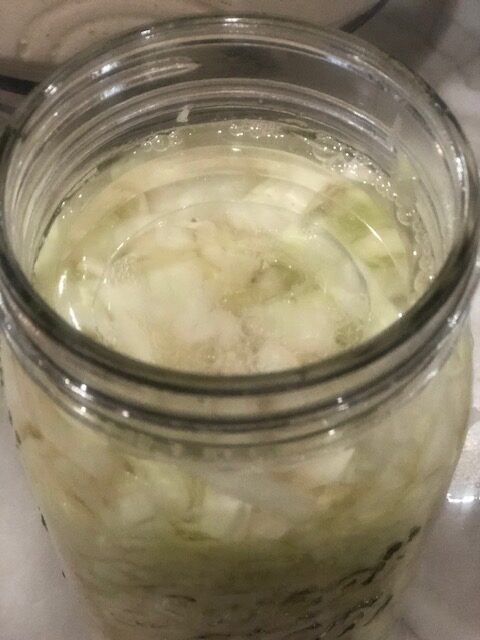
Homemade Raw Sauerkraut
Ingredients
- 1 Medium Head of Cabbage (I buy organic)
- 1-3 tbsp Real Pink Salt
- 1/2 tsp Caraway Seeds
Instructions
- Remove the outer leaves from the cabbage and discard all but one.
- Chop the cabbage into thin strips and place in a bowl. Add the caraway seeds.
- Sprinkle the salt on top and let it rest for five minutes. Use your judgement on the salt. Start slowly with 1 tbsp and see how it tastes. You want it to taste salty but not over salty. If that makes sense haha.
- Now, massage the cabbage and salt together. You will quickly start to see the liquid that you will use as your brine.
- Fill clean mason jars or you can use a crock. Save about 1-1/2 inch head space at the top.
- Pour that brine liquid over the cabbage. Make sure it covers it. If it didn't make quite enough, that's ok. You can just add some extra water.
- Next, take that outer cabbage leaf that you saved and place it on top.
- If you have a weight, put that on top of the cabbage leaf, making sure none of the sauerkraut is exposed.
- Put your lid on and sit on the counter for 7-14 days, depending on how warm your house is.
- Store in the refrigerator, up to a year.
Notes
- You can use a knife, food processor or mandolin to cut the cabbage.
- Make sure you don’t have any air pockets when you have packed all the cabbage in the jar/crock. You can use a knife to go in and out of the jar.
- Check the jar after a few days. You should start to see bubbles and that means it’s fermenting.
- If you find mold on top, just scrape that part off, clean your weight and add some more water and put the lid back on. Keep checking on it from time to time.
- The longer you let the sauerkraut ferment, the more beneficial it will be. It needs warmth. If you live in a cold climate, I recommend making it in the Spring or Summer.
- You can basically use any size jar and head of cabbage you want to. I’ve made mine in both the mason jars and the stoneware crock. They both turn out perfect. If using the crock, I’ll transfer the kraut into the mason jars for longer storage.
Tools You May Need
Real Salt – (Use code: lhsimpleliving) for a 15% discount
Pin For Later
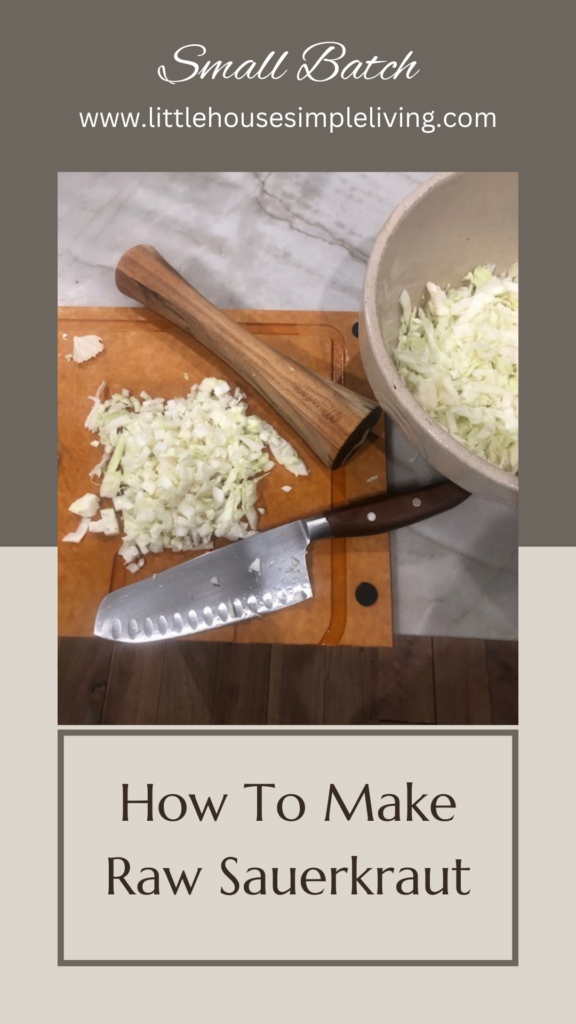
Let me know if you end up making my raw sauerkraut recipe. It’s totally customizable as far as how much to make. Tag me over on Instagram (@lhsimpleliving). I love seeing everything ya’ll make. Here’s to great gut health and feel free to email me at [email protected] if you have any questions.


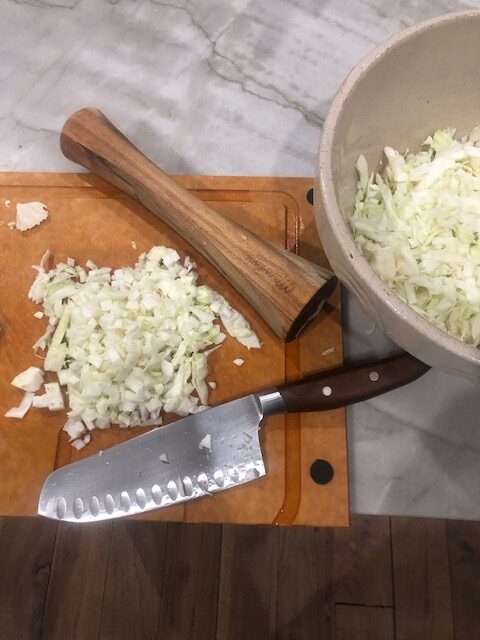
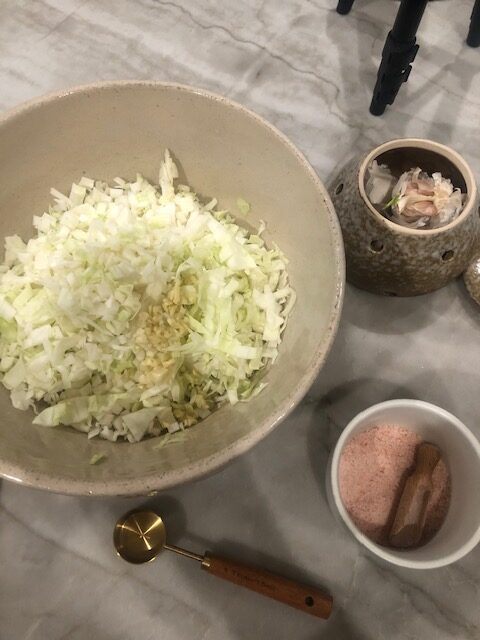
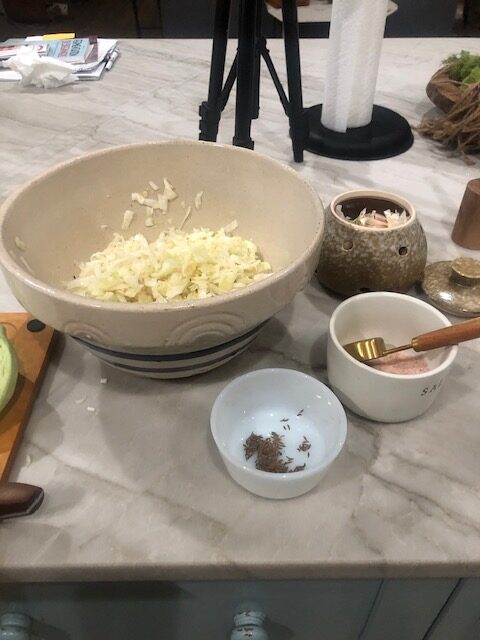
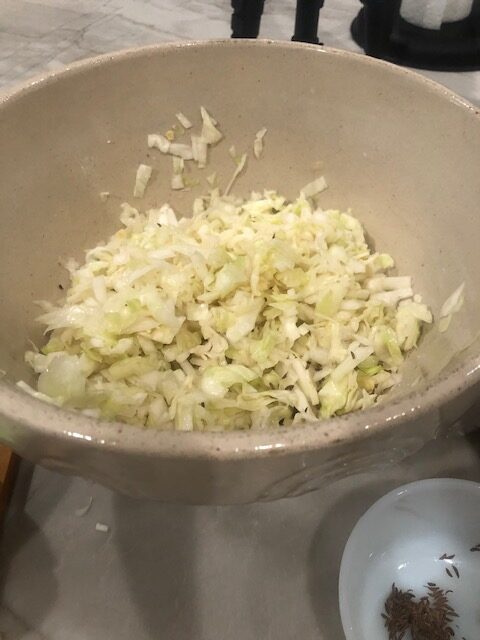
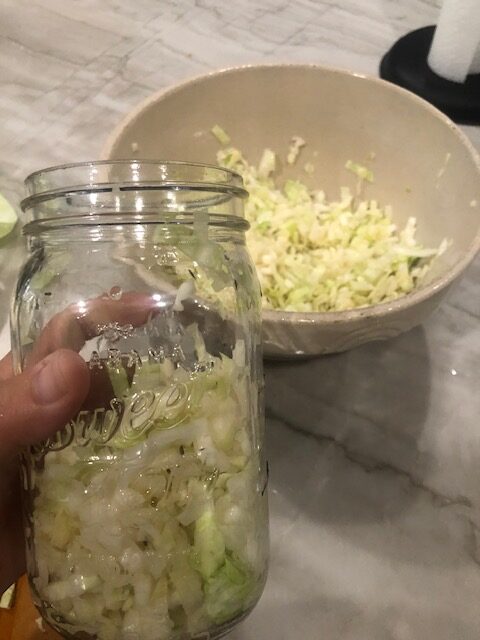

Leave a Reply